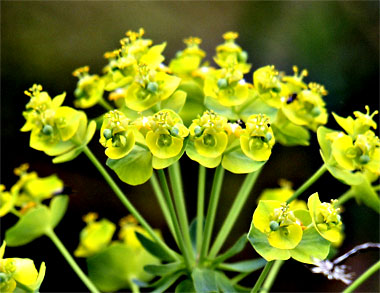
 Cypress Spurge
Cypress Spurge
Euphorbia cyparissias
It is sometimes called "Graveyard weed" as it is often seen in country graveyards. In its natural setting, Cypress Spurge thrives in dunes, pannes, coastal headlands and grasslands; in North America it is commonly found in the dry, gravelly soil of roadsides, pastures, and meadows. Cypress Spurge thrives in open, disturbed areas. It usually has a height of 10–80 cm (6-12 inches). Its petal-like bracts are usually green-yellow, maturing to purple or red from May to August. Cypress Spurge grows a fruit that, when mature, explodes to spread seeds up to 16 feet (4.9 m). However the plant also reproduces through lateral root buds which allows it to spread quick and densely. It can be easily identified by its leaves, which are small and linear (they have a length of 2–4 cm and a width of 1–2 mm). When broken, cypress spurge, like all spurges, emits a milky sap. Other sources allege that the milky juice of the plant is toxic and causes irritations on contact with the skin